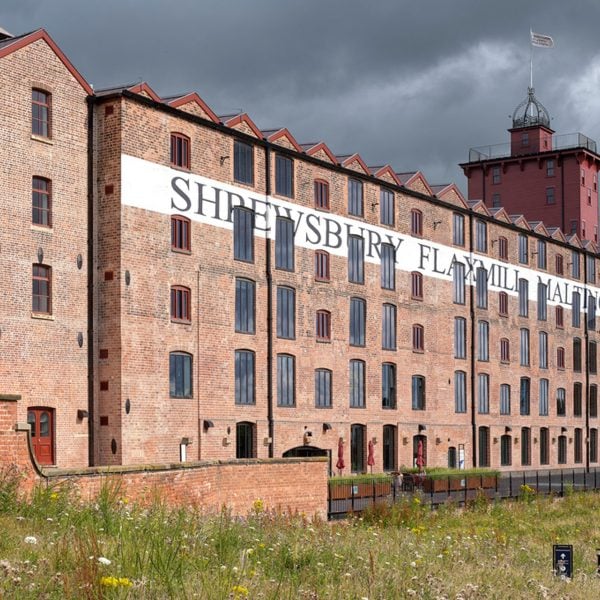[ad_1]
Feilden Clegg Bradley Studios has completed its 20-year transformation of a historic mill in Shropshire into a museum and workspace that celebrates its pioneering cast iron-framed structure.
The Grade I-listed Shrewsbury Flaxmill Maltings was originally constructed in 1797 by architect Charles Bage and is known as the “grandfather of skyscrapers” due to its structure, which was the first of its kind anywhere in the world.
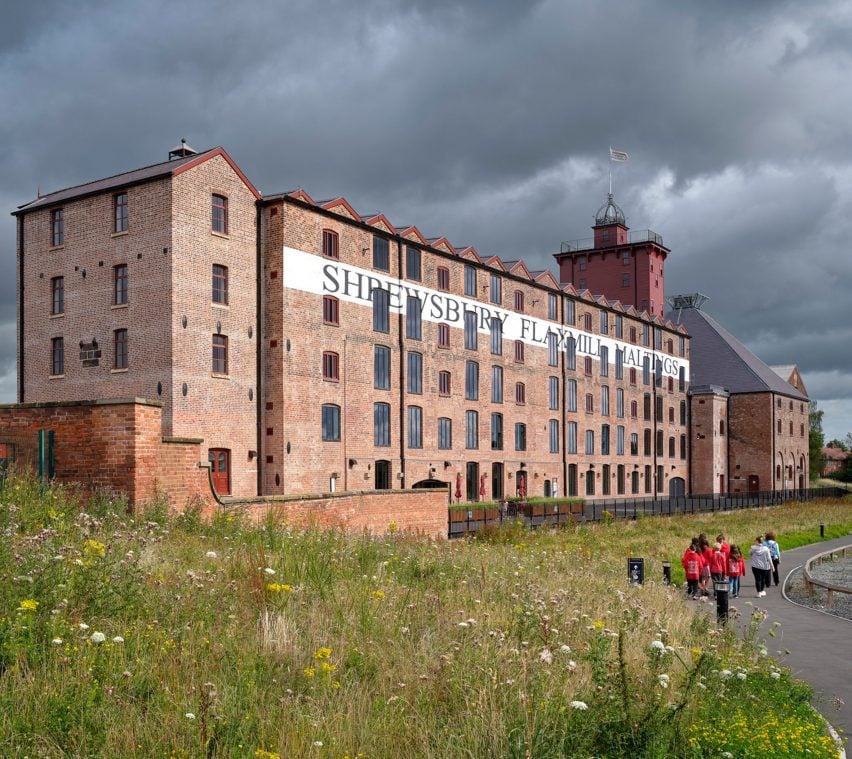
The site was used as a flax mill before being converted into a maltings, or malt house, and serving a stint as a temporary barracks during the second world war. In 1987 the mill was closed and stood neglected until its eventual purchase by Historic England in 2005.
Aiming to give the mill another 100 years of life, Feilden Clegg Bradley Studios (FCBS) was tasked with restoring its structure to house an educational museum and offices.
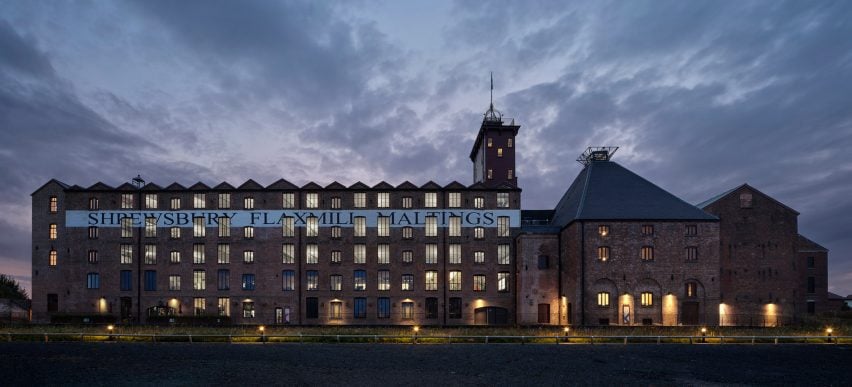
“As a site that had been 100 years as a flax mill, and 100 years as a maltings, we wanted to help set it up for the next century of productive use,” partner Geoff Rich told Dezeen.
“The project seeks to restore the main mill – the oldest iron-framed building in the world – as the centrepiece of a new era of productivity and usefulness.”
“To do this we’ve rescued the building in its structural repair, and made some important changes, particularly to the design of fenestration and to ease integration of new uses,” he added.
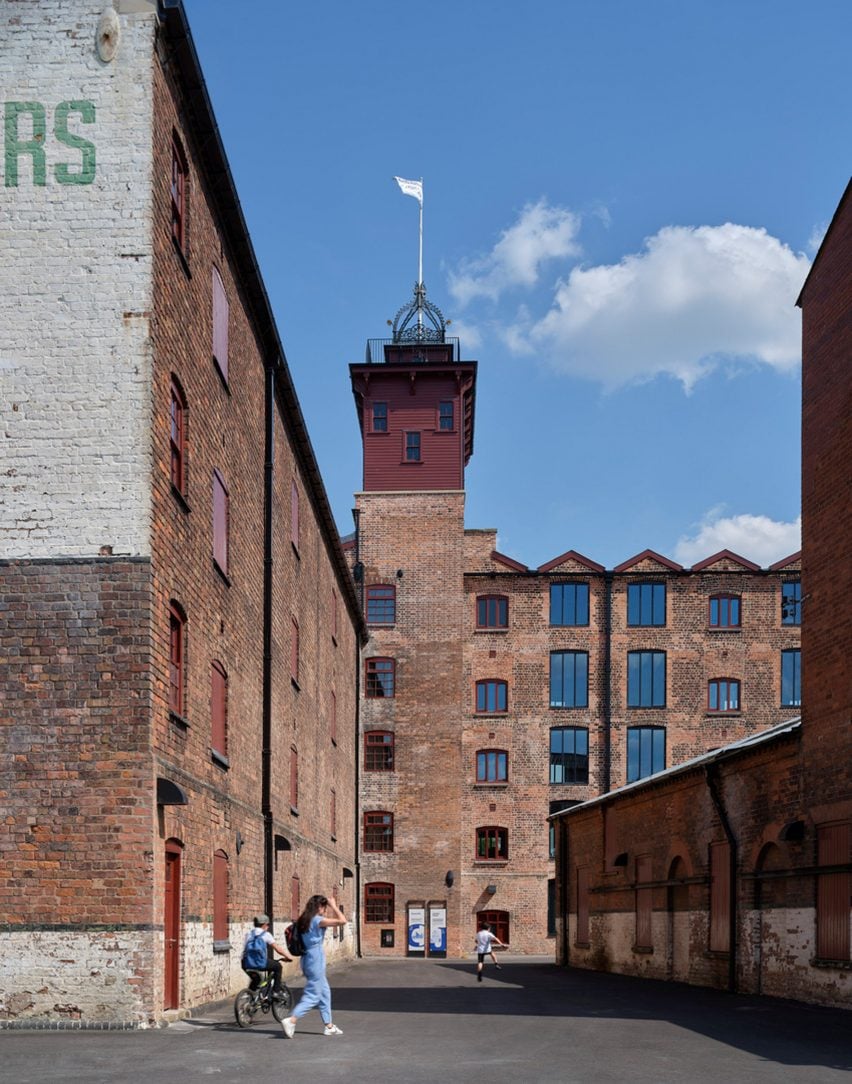
The main focus of the project was the “invisible repair” of the mill’s fragile cast iron frame, which had suffered from cracking but could not be radically altered due to its heritage status.
Through the introduction of new masonry, a concealed steel grillage and additional ground-floor columns, FCBS was able to enhance its structural strength while not detracting from the frame’s “unique character”.
To avoid disrupting the large, open spaces of the mill, circulation is housed in the former kiln, with lifts, a black-steel staircase and walkways positioned beneath its restored timber- and steel-framed roof.
On the ground floor, a public cafe sits alongside a learning space that tells the story of the mill’s role in the industrial revolution. It is set against a rough backdrop of white-painted brickwork.
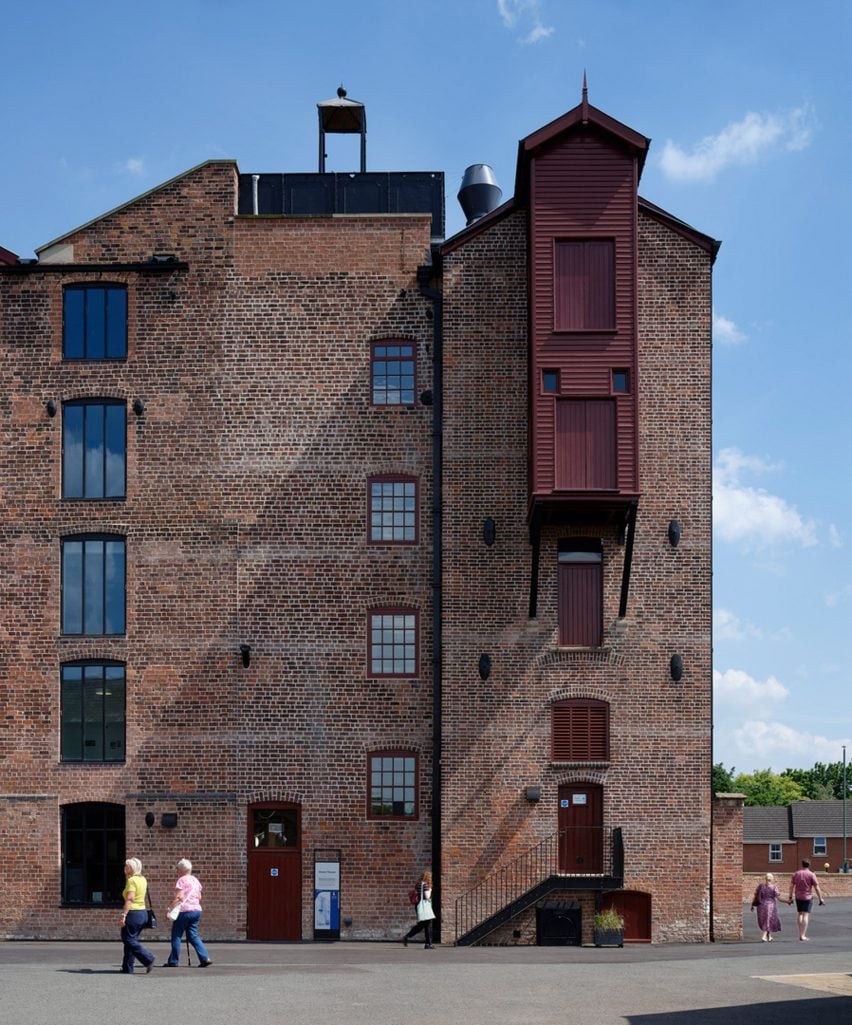
Above, four floors of office space are framed by slender cast iron columns, with daylight reintroduced through the opening of 110 formerly bricked-up windows.
“The spaces within the main mill enable the cast iron structure to be seen and appreciated, and floor layouts are planned around the structural layout of the building, including full floor plate corridors, and fully open floors on some levels,” Rich told Dezeen.
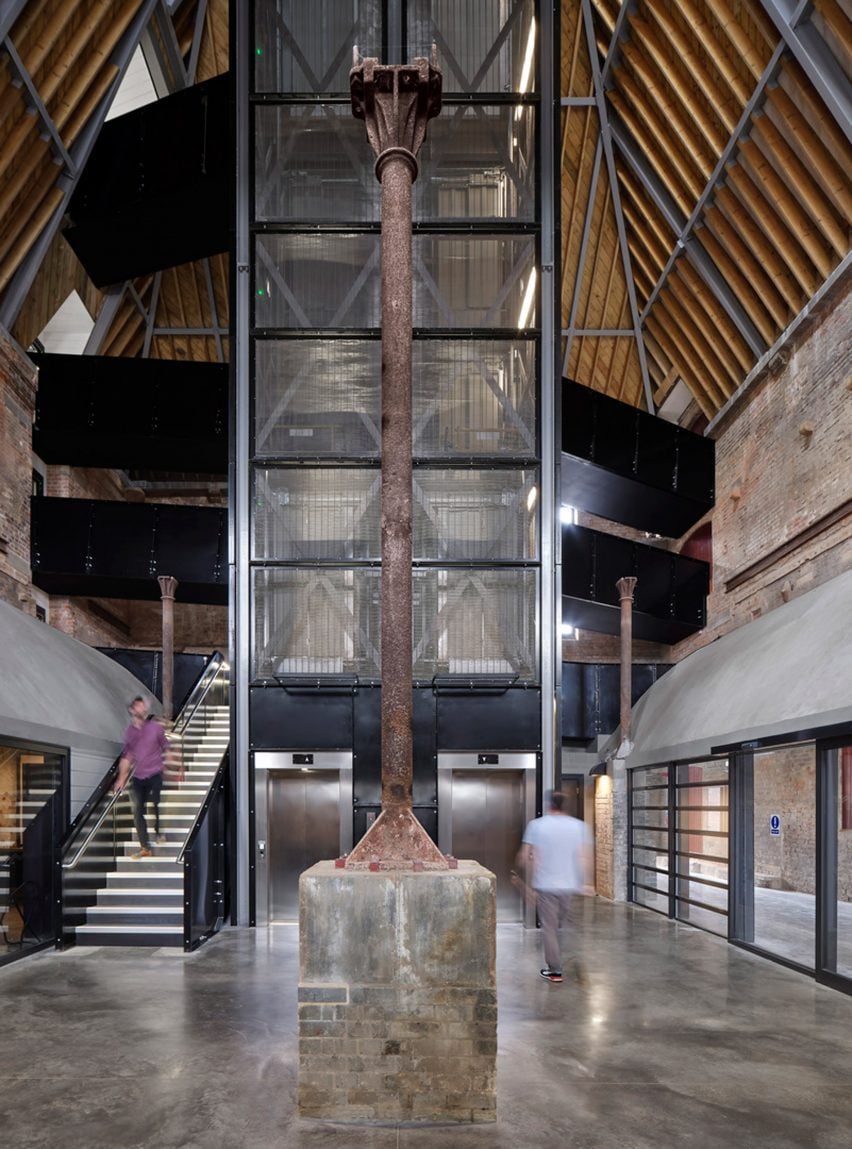
“The kiln is a wonderful volume we wanted to preserve and it, therefore, naturally lent itself as the place for vertical circulation, alongside preserving the historic stairs elsewhere,” he added.
Access has also been provided to the Jubilee Tower at the centre of the building, which visitors can now ascend for views of the surrounding city.
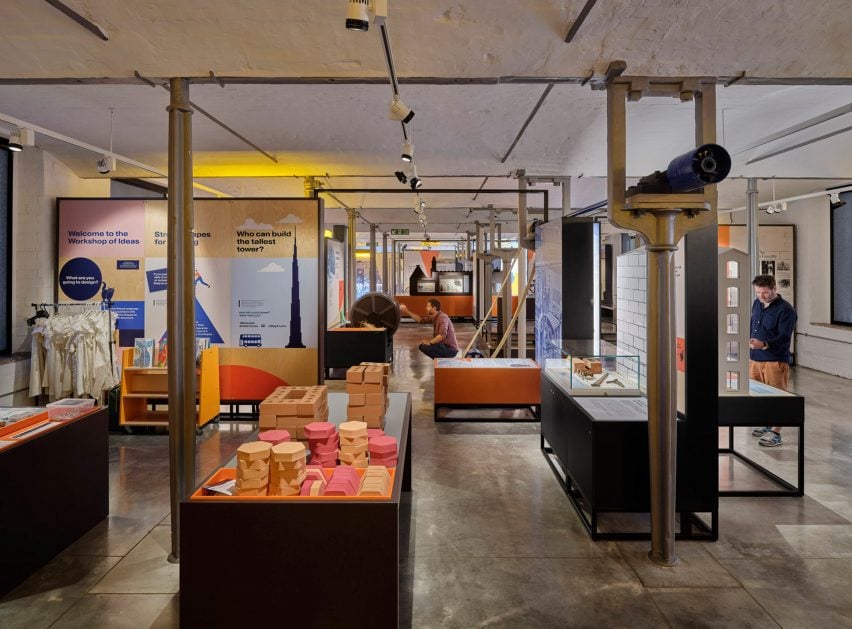
FCBS was founded in 1978 by Richard Feilden and Peter Clegg with offices in Bath, London, Manchester and Belfast. Another recent historic renovation by the studio involved four heritage-listed buildings within the Brighton Dome cultural complex.
Other recent restoration projects featured on Dezeen are the Caesars Superdome in New Orleans, carried out by Trahan Architects, and a Czech provostry revamped by Studio Acht.
The photography is by Daniel Hopkinson.
[ad_2]
Source link
